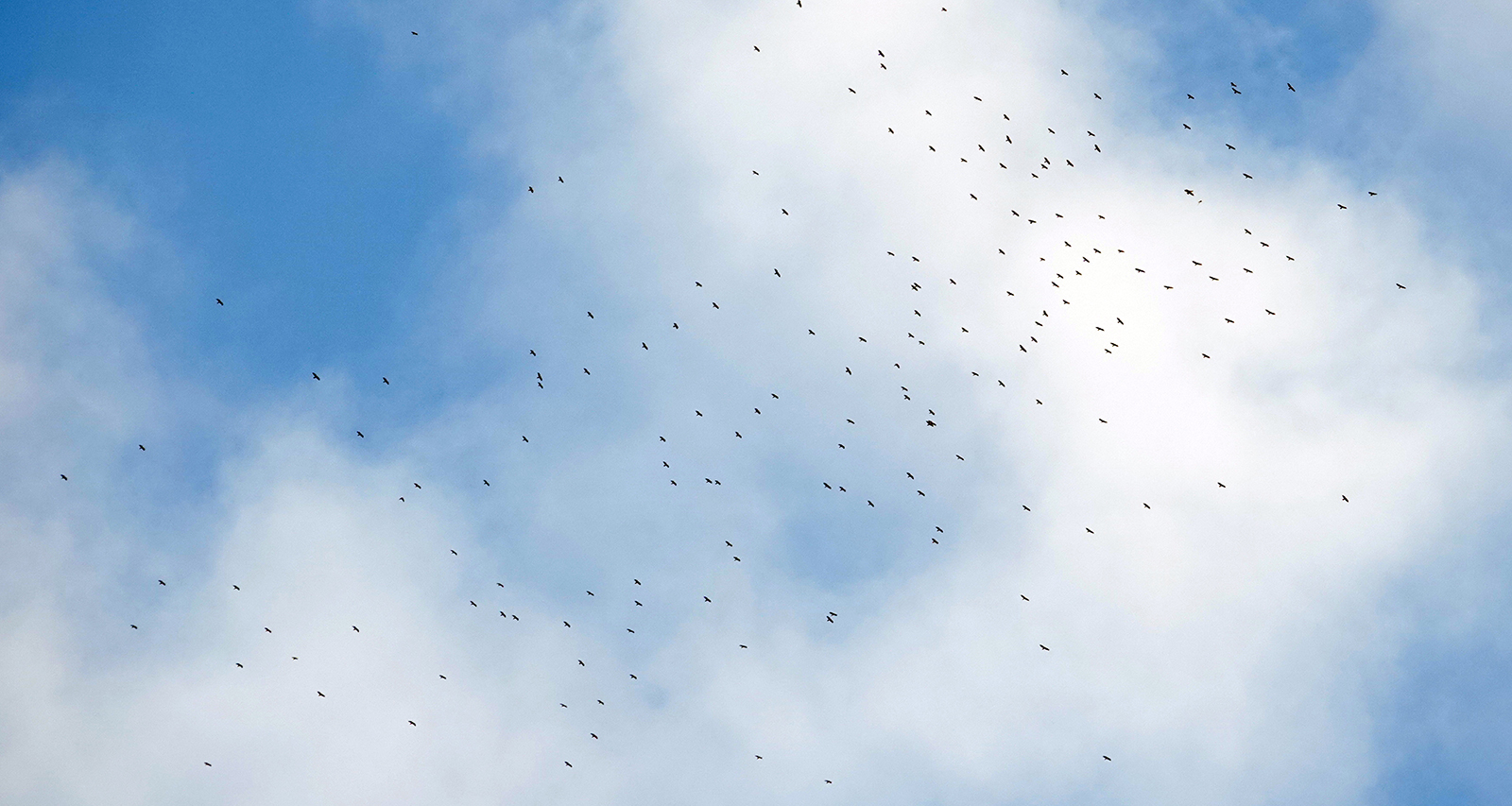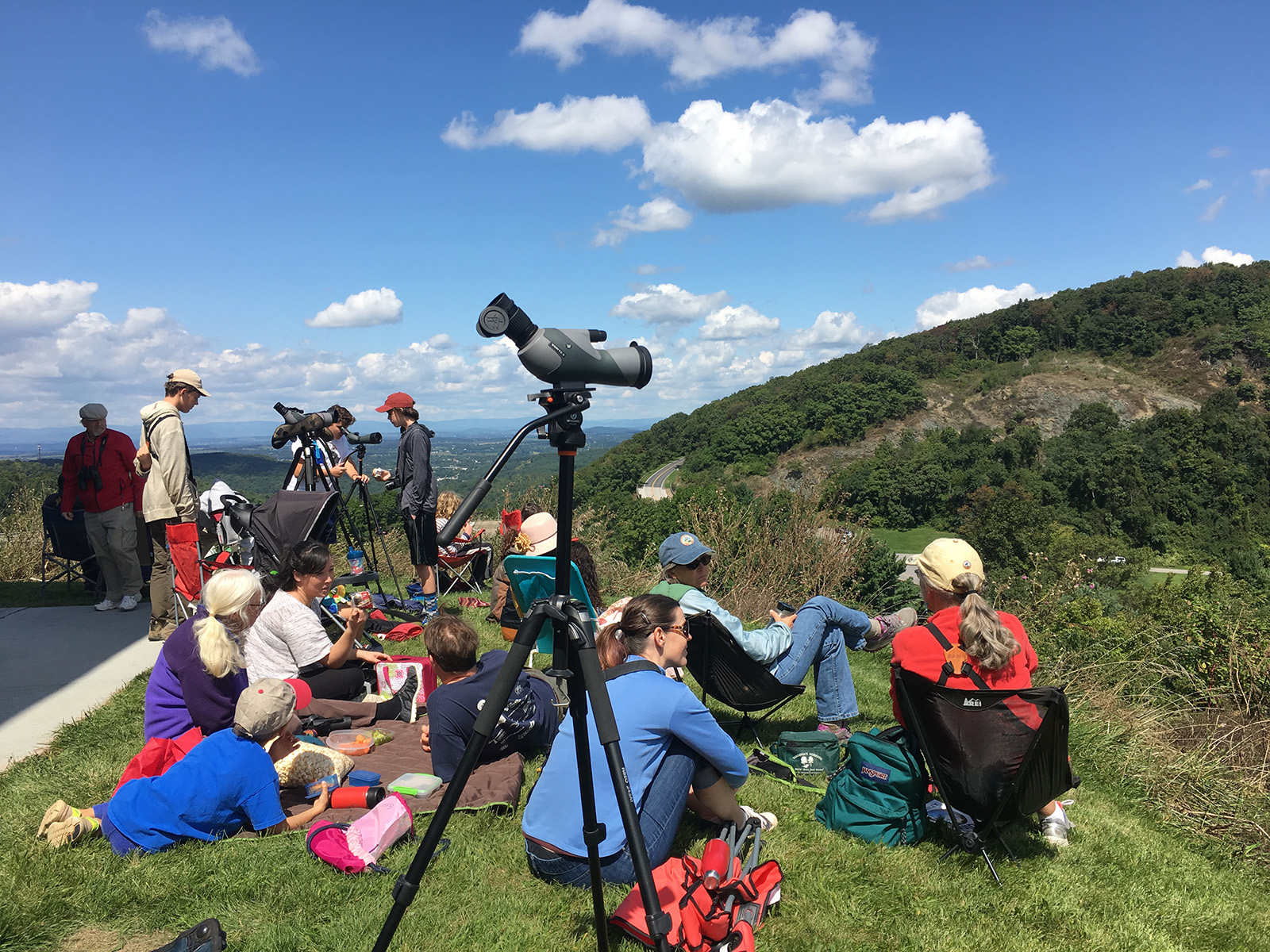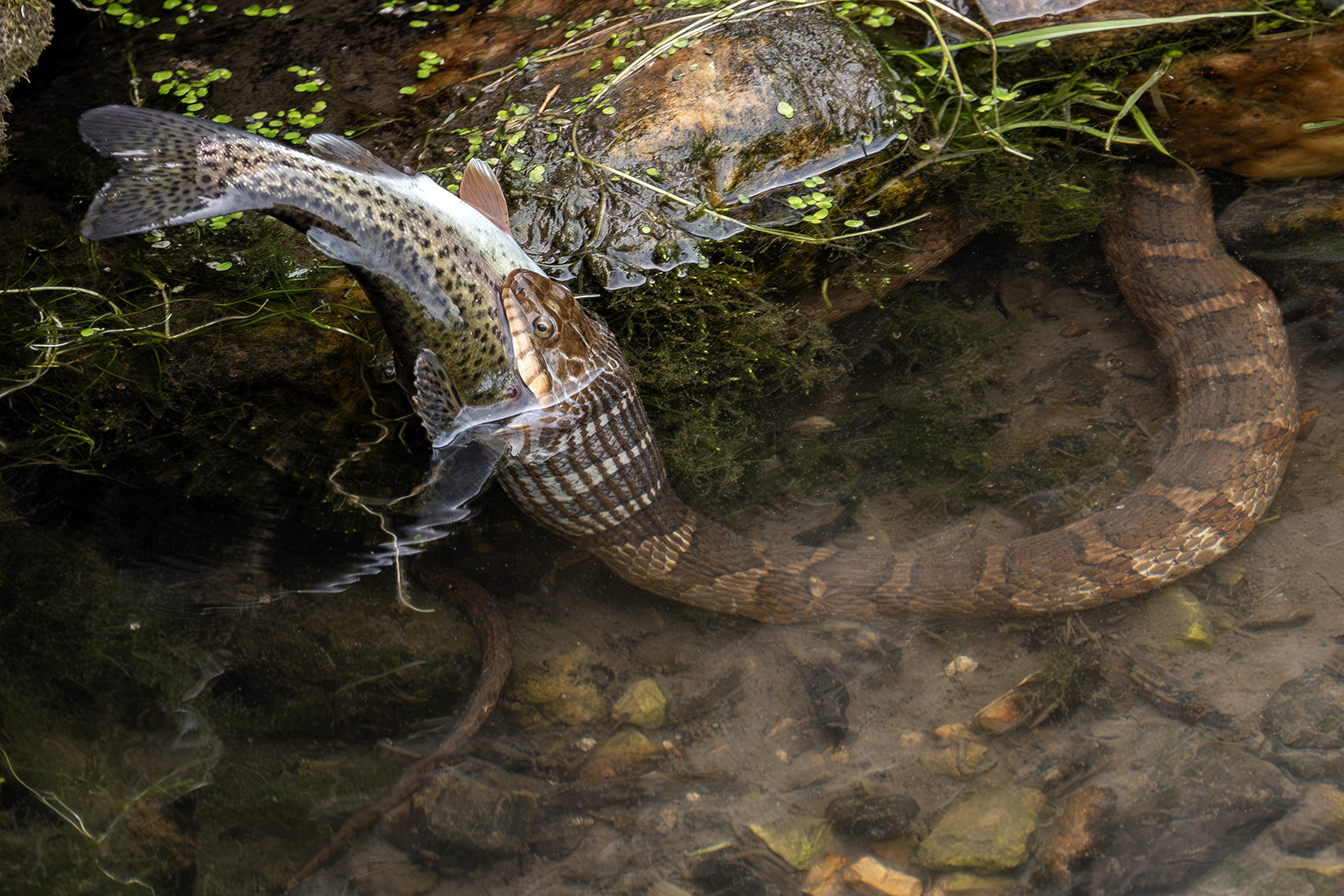By Vic Laubach
Photos by Vic Laubach
North America is home to a whopping 35 species of raptors (hawks, falcons, kites, vultures, and eagles)! Most of these raptors migrate south each fall by the hundreds of thousands—some fly a short distance while some travel all the way to South America for the winter. Because most of these raptors follow defined “flyways” (guided by geography, water, winds, and weather), several hundred “hawk watches” have been established at prime viewing locations such as the tops of ridges or near large bodies of water. At these hawk watch sites, thousands of people gather each fall to witness the great raptor migration. Citizen scientists use these hawk watches to monitor the raptor population by counting all raptor species as they migrate through. Data from these studies help monitor the status of raptor populations.

The mission of Hawk Migration Association of North America (HMANA), founded in 1974, is to advance scientific knowledge and promote the conservation of raptor populations through the study, enjoyment, and appreciation of raptor migration. Each spring, HMANA hosts a continent-wide Raptorthon to raise funds for individual hawk watch sites and for HMANA’s mission efforts. Teams from many different hawk watch sites spend a spring day counting raptors and other birds while receiving support from sponsors. It’s a fun way to study raptors and raise funds at the same time!
Here in Virginia, the Rockfish Gap Hawk Watch, located on Afton Mountain just east of Waynesboro, has been counting raptors since 1976. We average nearly 30,000 raptors migrating each fall (August 15 – November 30). This count includes 16 species, of which broad-winged hawks comprise the majority (24,000) of the count. A small number of volunteers conduct the raptor count at Rockfish Gap Hawk Watch, where we submit our data to HMANA’s online database. Our data, as well as data from all hawk watch sites, are available for anyone to view and for researchers to use for raptor population studies.

On May 3, a team from Rockfish Gap Hawk Watch (Vic Laubach, Rich Wood, Robyn Puffenbarger, and Bill Benish) conducted our 12th annual Raptorthon. We spent the day birding in Highland County, Virginia, ending up with 100 species, including 18 warbler and four raptor species. The weather was beautiful, our day was long (12 hours), and we drove approximately 210 miles in search of birds!
Our first stop was at the top of Shenandoah Mountain at the Confederate Breastworks on Rt. 250 where we heard a whip-poor-will singing just as dawn was breaking. On our drive down the mountain to Monterey we found a wild turkey, a yellow-breasted chat, and lots of warblers including cerulean, worm-eating, ovenbird, Louisiana waterthrush, black-and-white, blackburnian, redstart, northern parula, black-throated green, and pine. On our drive from Monterey to Paddy Knob (at the West Virginia border), we found wood duck, solitary sandpiper, bald eagle, yellow-billed cuckoo, and yellow warbler.
At Paddy Knob (elevation 4,477 feet) we were surrounded by birds and song! Here, there were many least flycatchers, as well as veery, Swainson’s thrush, hermit thrush, yellow-bellied sapsucker, dark-eyed junco, black-capped chickadee, and rose-breasted grosbeak, and we heard two ruffed grouse drumming in the distance. Warblers included ovenbird, worm-eating, black-and-white, northern parula, magnolia, blackburnian, chestnut-sided, black-throated greens and blues, yellow-rumped, and Canada.
We then drove north to Monterey and Blue Grass. At the Monterey Trout Farm we encountered avian, amphibian, and reptilian creatures! An osprey and red-tailed hawk circled overhead while singing below were yellow-throated vireo, red-eyed vireo, Louisiana waterthrush, redstart, and yellow warbler. In the water were wood ducks, a spotted sandpiper, salamanders, and singing American toads. Then we found a real highlight of the day: a large northern water snake swallowing a rainbow trout! The snake had the fish half-way eaten when we found it, and we watched for a few minutes before it finally swam downstream to finish its meal.

Along Wimer Mountain Road and at Bramble Hill (on the West Virginia border), we had a female American kestrel exit a nest box and found other birds including northern flicker, eastern kingbird, swallows (barn, tree, cliff), house wren, orchard oriole, common yellowthroat, chestnut-sided warbler, yellow warbler, and belted kingfisher. Other highlights in the Blue Grass area included greater yellowlegs, least sandpipers, bobolinks, Savannah sparrows, Baltimore oriole, red-headed woodpecker, and ruby-throated hummingbird.
We had quite a wonderful day for our Raptorthon! We’re thrilled to report that we surpassed our goal of raising donations and we appreciate everyone who supported us. We’re looking forward to the hawk watch this fall!
Vic Laubach is the coordinator of Rockfish Gap Hawk Watch and vice-president of the Augusta Bird Club.


